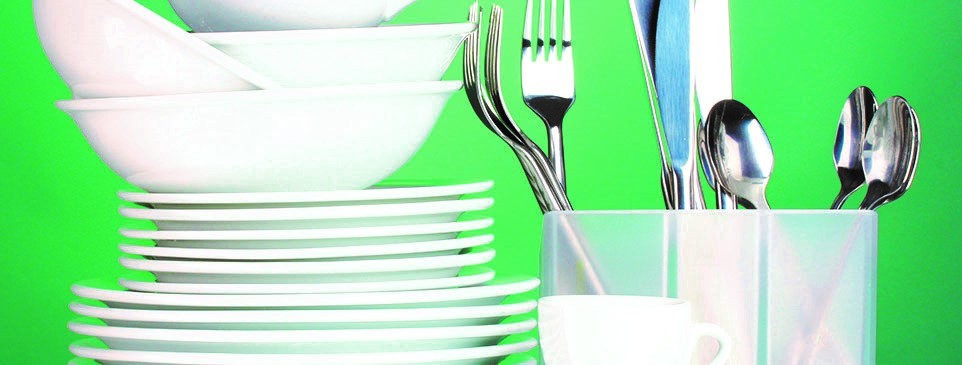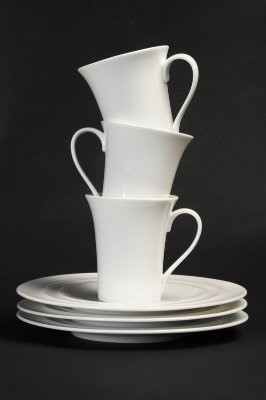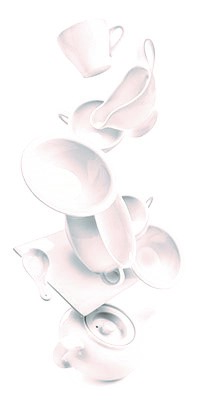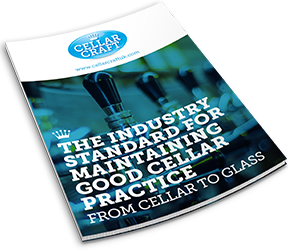The First Taste is with the Eyes

 The pub food sector is set to increase and a report last year in the Publicans Morning Advertiser showed that the main factor attributed to the growth in the pub industry outside of London was food sales.
The pub food sector is set to increase and a report last year in the Publicans Morning Advertiser showed that the main factor attributed to the growth in the pub industry outside of London was food sales.
Food can be a highly profitable venture for the small pub if you get it right. Not only can it increase drinks sales with the retention of customers for longer periods (they no longer have to go home or somewhere else to eat), but also there can be increased footfall from new customers who would not normally drink in pubs, with the advantage of attracting family groups.
Putting it on a plate for you…
While the quality, style and range of food on offer is extremely important, so is the correct presentation. If customers are paying a premium for your food they will expect something more than for it just to be dumped unthinkingly on a dodgy plate with mismatched or dirty cutlery. Also, with the rising trend in social media and customer review sites a poor attention to detail can actually harm your business.
The quality and cleanliness of your tableware is highly important as such you should always use a good quality dishwashing detergent and rinse aid in your commercial dishwasher.
There are many styles of dishwasher available depending on your requirements and the amount of space you may have available in your kitchen.
Under-counter Dishwashers
These look similar to home dishwashers and work in a similar way to Cabinet Glasswashing Machines  although at much higher temperatures. These are small enough to fit under the counters of a standard kitchen, taking up less space than other styles available on the market. Unlike home dishwashers these will be fitted with automatic dosing pumps and hoses for use with liquid dishwashing detergents and rinse aids. With cycle times of between 3 and 6 minutes these are designed for fast output in medium sized kitchens. As these dishwashers are at floor height there may be some manual handling issues with the lifting of heavy wash baskets into and out of the machine, and this should be taken into consideration when siting the equipment.
although at much higher temperatures. These are small enough to fit under the counters of a standard kitchen, taking up less space than other styles available on the market. Unlike home dishwashers these will be fitted with automatic dosing pumps and hoses for use with liquid dishwashing detergents and rinse aids. With cycle times of between 3 and 6 minutes these are designed for fast output in medium sized kitchens. As these dishwashers are at floor height there may be some manual handling issues with the lifting of heavy wash baskets into and out of the machine, and this should be taken into consideration when siting the equipment.
Pass Through Dishwashers
These are tall cabinet dishwashers that are designed to be loaded at bench height by sliding the wash basket into the machine before a hinged door / hood is lowered into place and the dishwash cycle started. Cycle times last from 1.5 to 3 minutes. These machines automatically empty when shut down so that no dirty/unclean water is left in the machine overnight. Optionally these can have automatically dosing equipment for the liquid detergent and rinse aids or can be manually fed from a reservoir which means a powder detergent could also be used.
Conveyor Fed Dishwashers
These are the largest style of commercial dishwashers available and have the highest output of clean dishes and cutlery. These types of dishwashers are only really required in businesses that have very high volumes and fast throughput of customers, they operate on a continuous washing cycle, tableware is placed into cleaning baskets which are then taken by automatic conveyor into the washing area,washed and through to a drying section before exiting the machine for removal from the basket ready for reuse. The machines are available with either manual or automatic dosing systems for the detergent and rinse aid which means either liquid or powder detergents can be used.
All dishwashers are designed to operate at a wash cycle temperature of around 60ºC and to rinse dishes at around 82ºC to aid the drying process.
Products to help your Dishwasher
Dishwasher Detergent
 Available in powder, liquid or tablet form standard dishwashing detergent is a blend of sodium hydroxide (caustic soda), water softening agents, chelating agents and corrosion inhibitors and in some cases a chlorine release agent, some lower quality commercial detergents may also contain surfactants. These all work together to remove food greases and residues, removing staining from tea, coffee, and strong colours/spices, prevents streaking and spotting and also remove carbonised food (Burnt on) from pots, pans and trays.
Available in powder, liquid or tablet form standard dishwashing detergent is a blend of sodium hydroxide (caustic soda), water softening agents, chelating agents and corrosion inhibitors and in some cases a chlorine release agent, some lower quality commercial detergents may also contain surfactants. These all work together to remove food greases and residues, removing staining from tea, coffee, and strong colours/spices, prevents streaking and spotting and also remove carbonised food (Burnt on) from pots, pans and trays.
These types of detergent are a lot stronger than glasswash detergents as they do not need to be as gentle on the surfaces they are cleaning and also have to remove more resistant soiling. Dishwash detergents should never be used in a glasswasher as this will cause damage to glasses and glasswash detergents should never be used in dishwashers as they will give very poor results.
The majority of dishwashing detergents are not safe to use on aluminium pots, pans and cutlery, there are specialist detergents on the market for cleaning aluminium items if you require them.
Dishwasher Rinse Aid
This is usually a blend of surfactants, an anti-foaming agent and a dye to give it a colour. The surfactants work by making the water droplets on the table & kitchenware thinner and flatter before entering the drying stage, this causes them to slide easily from the surface of the items and any remaining residue to evaporate away faster, in a way the term rinse aid is incorrect as these are actually drying enhancers!
Depending on the material properties of the items being washed to allow water “sheeted” (made to slide off) the less chance of streaks, spots and water marks being left behind to ruin your perfect presentation. Anti-Foaming agents are used to reduce foam building up because even low foam surfactants can cause an issue in dishwashers, these also help in the flash evaporating of water from the surface promoting faster drying cycles. Dye is added just to give the rinse aid a different colour to the detergent to make it easier to identify.
If you are experiencing any problems in delivering the perfect serve and would like some expert advice, just Ask CellarCraft

Download the entire CellarCraft guide
